
High-performance blockchain infrastructure is often misunderstood, even among native crypto users. The execution layer, in particular, is hard to visualize or explain — yet this layer is key to enabling a truly seamless Web3 experience.
In this post, we will outline what Altius Labs is building, for whom, and how it fits into the broader blockchain stack. Think of this as your fast track to the architecture that supports the future of decentralized applications.
⚙️ What is Altius Labs?
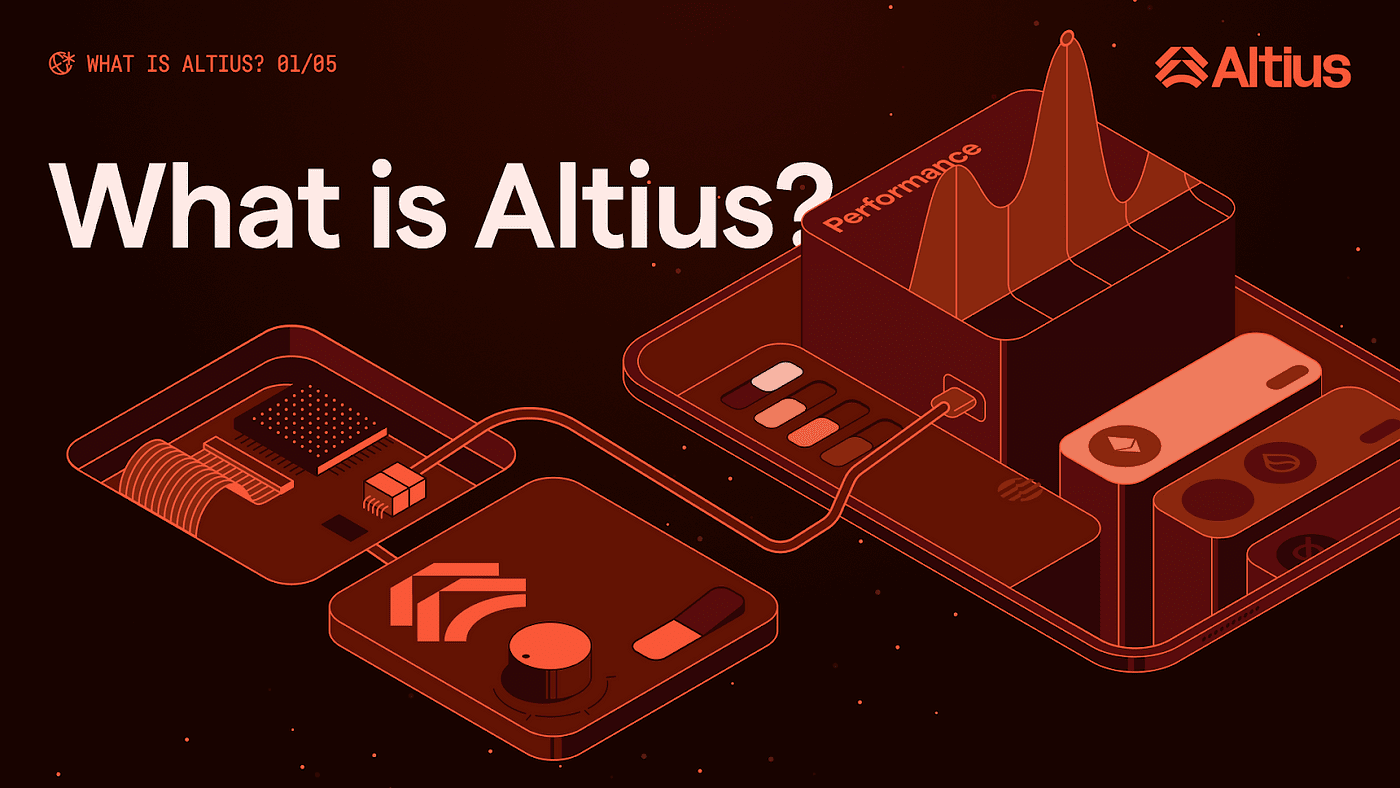
Altius is a high-performance VM-agnostic execution layer designed to enhance speed, efficiency, and scalability across the blockchain ecosystem. This layer removes execution bottlenecks, ensuring that interactions with the blockchain are faster and more efficient.
Unlike traditional blockchains that struggle with throughput limitations and congestion, Altius provides a seamlessly integrated scalable infrastructure layer with any chain, optimizing transaction processing — without requiring major architectural changes.
By focusing solely on execution, Altius elevates Web3 performance to Web2 standards. Whether it's DeFi, gaming, or institutional finance, Altius is the foundational engine that makes decentralized applications feel instant.
While starting with EVM compatibility, Altius is built to withstand the future and is VM-agnostic, with support for:
• EVM (Ethereum, L2 Rollups)
• CosmWasm / Evmos (Cosmos ecosystem)
• MoveVM (Aptos, Sui)
• WASM-based smart contract platforms
• zkVM, bitVM, and future VM environments
🧑💻Who Needs Altius and Why?
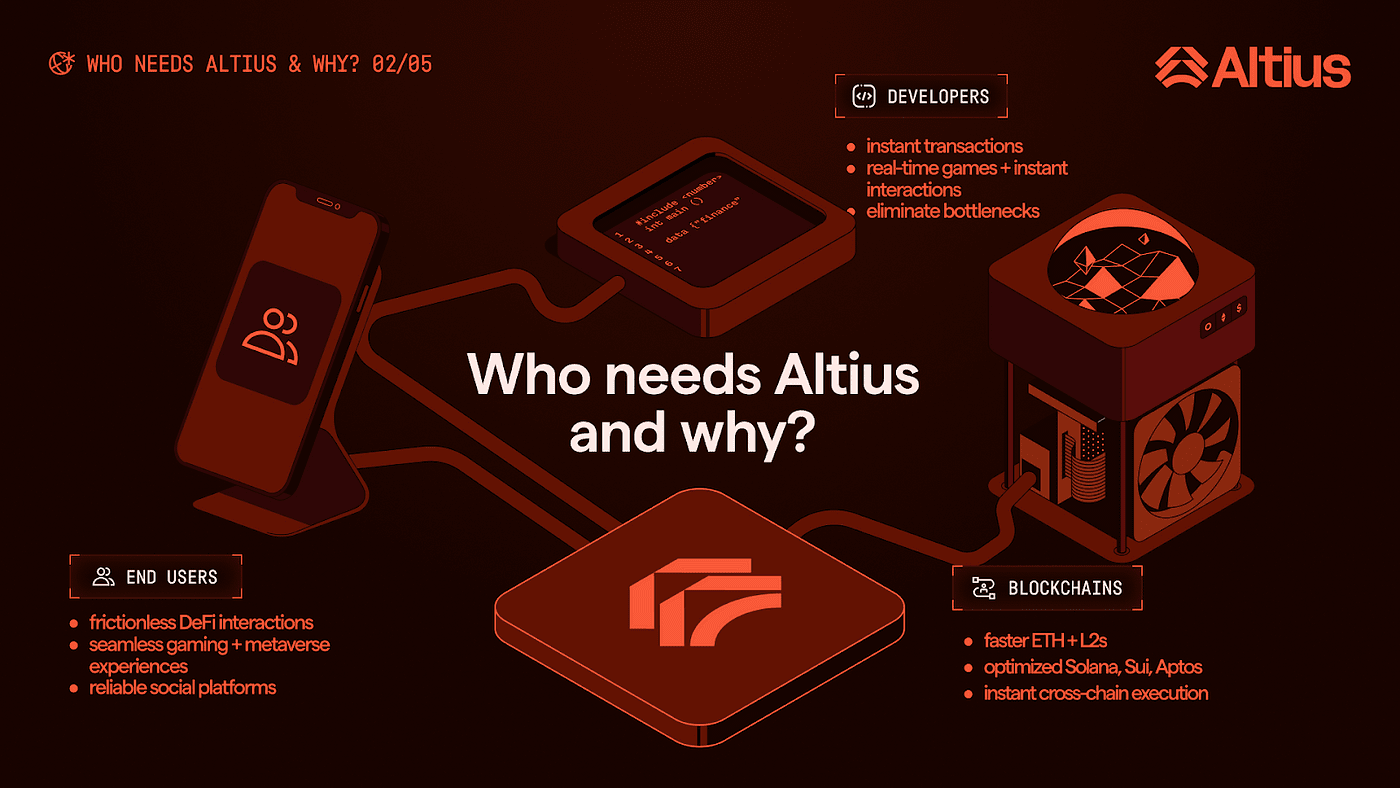
With the acceleration of blockchain adoption, execution speed remains a bottleneck across the stack — from the base layer and rollups to emerging application chains. Whether it's high-frequency trading, real-time gaming, or decentralized social applications, slow execution creates bottlenecks, delays, and poor user experience. Altius addresses this by upgrading the execution layer — a critical component supporting performance — without requiring major changes to the entire stack.
To understand the impact, let’s break down who benefits from Altius and how it fits into their architectures:
🌟Blockchain — Scale Execution Without Redesigning
Even fast chains have limitations. The most scalable networks still experience congestion. Altius acts as a modular execution upgrade — enhancing throughput without requiring forking or redesigning protocols on other blockchain stacks.
• Ethereum and L2 → Rollups drastically improve with parallel execution.
• Solana, Sui, Aptos → Chains that are already fast gaining additional execution efficiency.
• Cross-chain execution → Purpose-built networks can offload computationally intensive workloads to Altius for scaling.
Altius is not just another monolithic blockchain — it is an execution upgrade that enhances any modular architecture.
🌟Developers — Building Ultra-Performance dApps
Developers building modern stacks want performance without sacrificing modularity. Altius provides them with high-speed execution and composable integration, allowing them to focus on building great applications, not solving infrastructure bottlenecks.
• DeFi Protocols → Fully on-chain DEX CLOBs and other DeFi primitives.
• Gaming & SocialFi → Real-time interactions without lag or state delays.
• Application-Specific Chains → Execution becomes fast, flexible, and scalable.
With Altius, developers can push the boundaries of UX without worrying about performance sacrifices.
🌟End Users — Faster Transactions, Better Experience
Users care about one thing: performance. Whether swapping tokens, trading NFTs, or playing games — they expect instant feedback and reliability.
Altius works behind the scenes to make Web3 applications feel like Web2.
• Barrier-free DeFi → Instant swaps and trades without failure.
• Smooth UX → dApps load instantly, run smoothly, and respond quickly.
While Altius does not directly enhance the dApp interface, it supports the speed and reliability users expect — enabling an overall better UI/UX.
🔄 Analogy: If Altius Were Not a Web3 Company, What Would It Be?
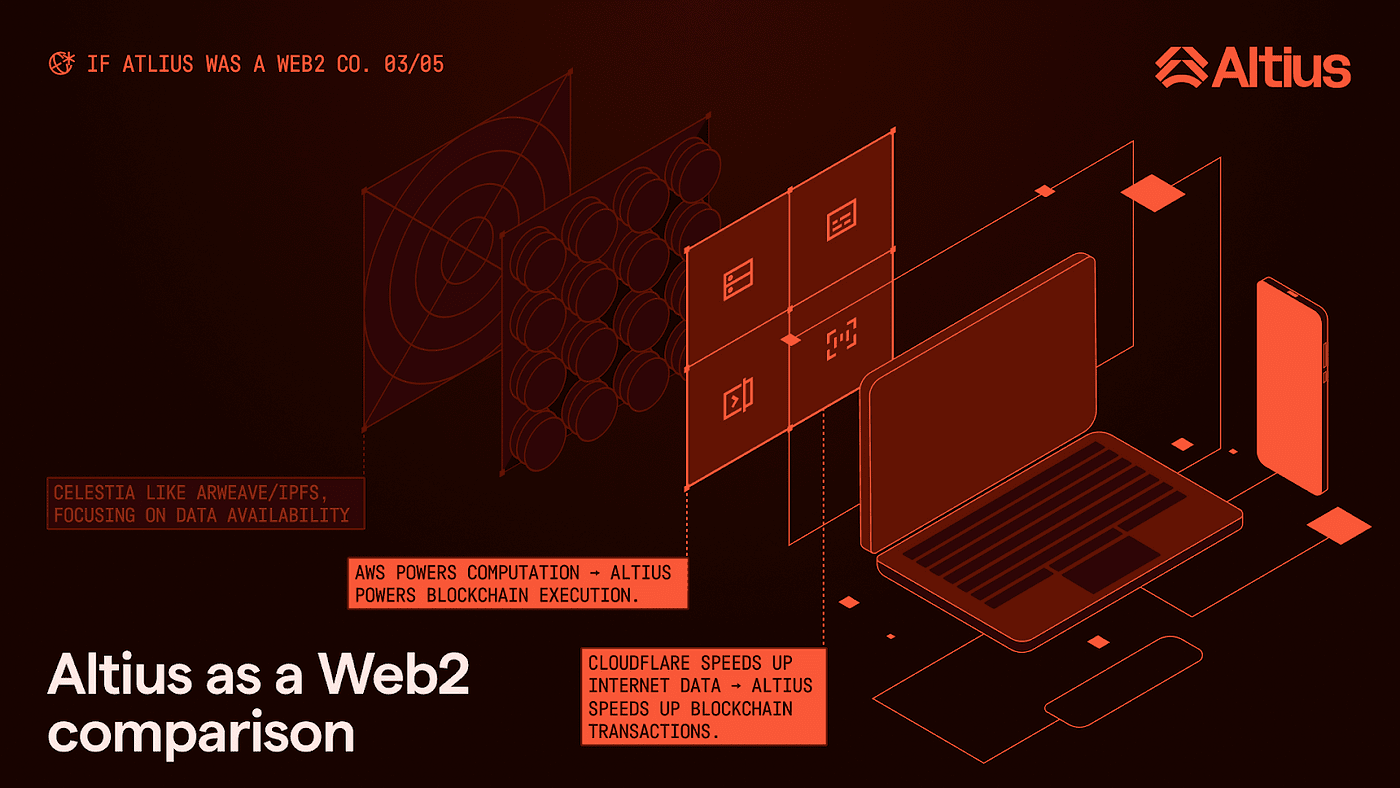
Altius for Web3 is like AWS and Netflix for the internet. Altius is a computing layer that supports fast and complex applications at scale.
Cloud providers like AWS and Google enable instant scaling. However, Netflix has the expertise to leverage AWS to scale and stream popular shows to everyone in the world in an instant.
• AWS supports global computing → Altius supports high-speed execution
Netflix ensures instant playback → Altius ensures fast and reliable blockchain UX
🏗️ What is Altius's Role in the Web3 Ecosystem — and How Does Altius Stand Out from Industry Leaders?
To understand where Altius fits, imagine the Web3 infrastructure stack as a 3-story building. Each layer is built on top of the layer below it — and Altius is right at the execution level, powering everything above it. Web3 Stack Visualization:
• Foundation → Consensus & Data Availability (Ethereum, Celestia, Cosmos Hub)
• Execution Layer → Altius (providing transaction speed and parallel performance)
• Application Layer → DeFi, NFT, Gaming, and AI etc.
Without a fast execution layer at the base, every layer above it will struggle during congestion. Altius makes the entire stack faster, leaner, and more efficient.
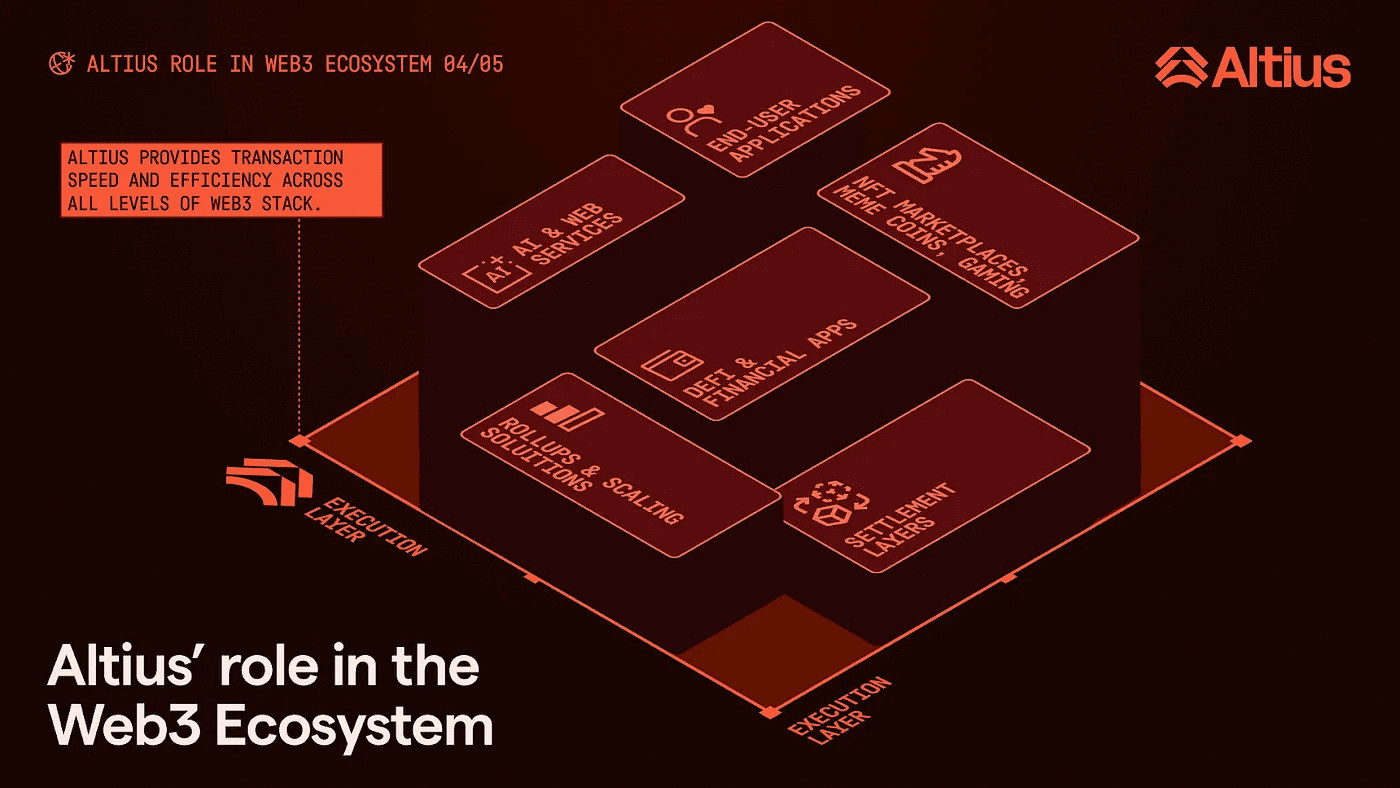
🌐 How Altius Stands Out from Industry Leaders
We are often compared to Ethereum, Solana, and popular L2s like Arbitrum, Optimism, or Base — but these projects operate on very different architectures. Here’s how Altius defines its unique position in the ecosystem:
By comparing Altius with some of the most well-known blockchain projects, we can see the key similarities and differences that define its unique role in the ecosystem.
• Solana achieves speed by vertically integrating its stack, often sacrificing decentralization. Altius delivers high performance without sacrificing modularity or validator diversity.
• Ethereum is powerful but limited by sequential execution. Altius brings parallel execution and instruction-level speed to every EVM-compatible application.
Arbitrum, for example, scales Ethereum by rolling up transactions, but still inherits execution limitations from Ethereum's sequential model.Altius not only scales Ethereum — it redefines execution itself through native parallelism and smart sharding.This means faster processing, lower latency, and — as a byproduct — efficient data storage.
Altius does not compete with L1 or L2 — it enhances them. It is a universal execution stack designed to fit into any modular architecture and take it to the next level.
🚤Can Altius Accelerate Even the Fastest Blockchains?
Yes. Even the fastest chains — Solana, Ethereum L2, Sui — have fundamental limitations in how they access blockchain state and how they execute transactions. Here’s why:
• State management is a bottleneck → State is read/written and potential state bloat.
Sequential execution causes delays → Transactions are processed one by one.
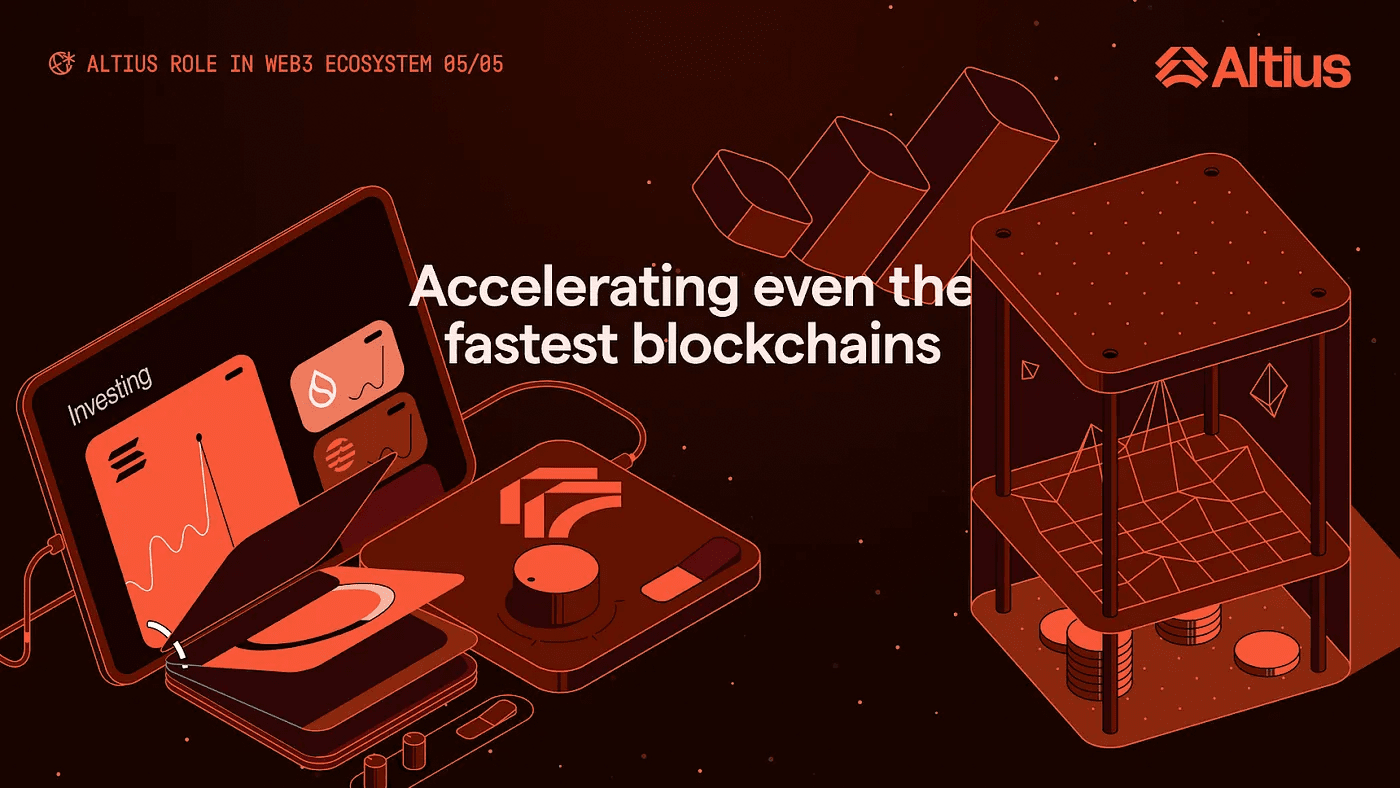
Altius fixes this through:
Scalable Parallel Storage → More scalable and effective state management across independent shards.
Instruction-Level Parallelism (ILP) → Smart contracts run concurrently and conflicts are resolved at the opcode level, rather than waiting at the transaction level.
Application Code Assessor (ACA) → Developers are rewarded for writing optimized and high-performance smart contracts in a multi-threaded environment.
Thus, even most used chains can be further accelerated by integrating Altius as an execution layer solution.
The result? Even chains with "high throughput" can reach the next level by integrating Altius into their stack. Think of it like adding a turbocharger to a high-end engine. #Altius #AltiusLabs

